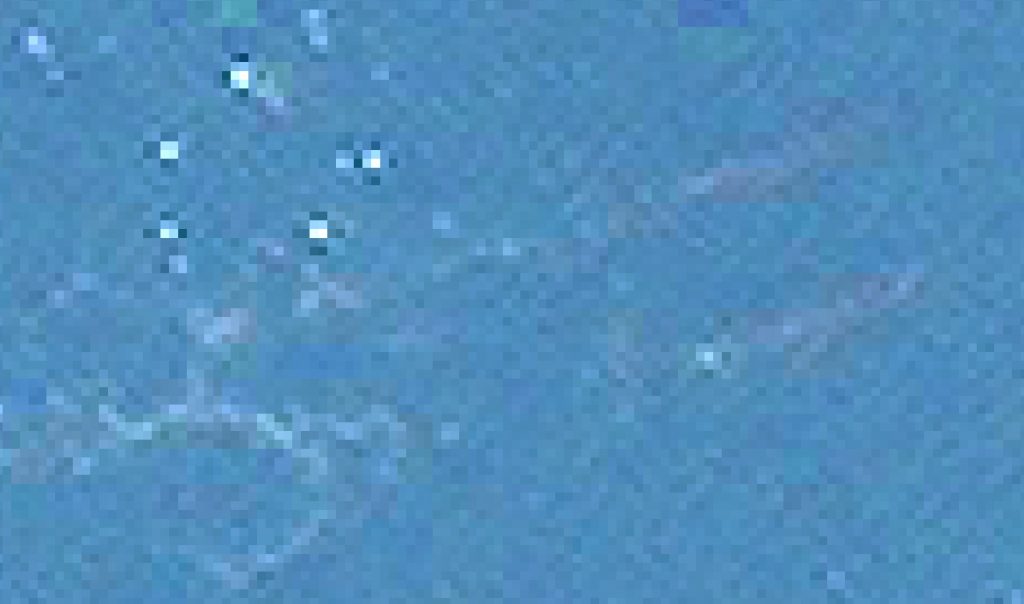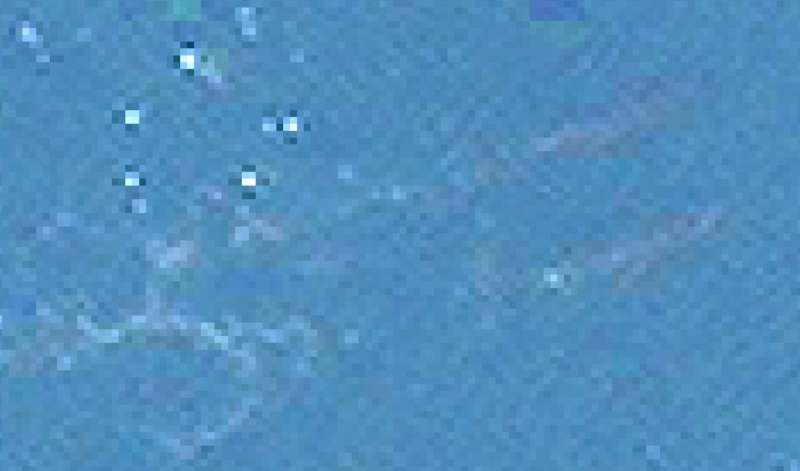
Whale images used for artificial intelligence research (Image Credit: Phys.org)

A new dataset featuring hundreds of satellite images of whales has been published to support the development of artificial intelligence systems which will aid crucial conservation work.
British Antarctic Survey (BAS) scientists Hannah Cubaynes and Peter Fretwell have published an expansive and freely available collection of satellite images of whales taken as part of BAS’ Wildlife from Space project. Antarctic wildlife is difficult to study as many species are remote and inaccessible. As a result, satellites that can photograph and track hard to monitor species are a valuable tool in conservation research.
Satellite imagery can be difficult to interpret with the naked eye though and analyzing satellite images is a laborious and time-consuming task for researchers. Emerging technology which uses artificial intelligence and automated counting techniques addresses this issue but is currently limited as accurate automated systems to detect different species are currently lacking. Such detection systems require access to open-source libraries containing examples of whales annotated in satellite images to train and test automatic detection systems.
Now, for the first time BAS researchers have published exactly such a dataset. A total of 633 annotated whale images have been published, which were created by surveying 6,300 km2 of satellite imagery captured by various very high-resolution satellites in regions across the globe. The dataset covers four different species: southern right whale (Eubalaena australis), humpback whale (Megaptera novaeangliae), fin whale (Balaenoptera physalus), and gray whale (Eschrichtius robustus).
Many whale species were brought to the verge of extinction in the age of commercial whaling, but since then some populations have started to recover. Today though, many threats to whales across the world persist and some species are classified as critically endangered. It is hoped that this will support the development of next generation artificial intelligence systems that will aid research and conservation of whale species that are threatened by ship strikes, pollution, entanglement, and disease.
Dr. Hannah Cubaynes, BAS Wildlife from Space Research Associate says that “satellite imagery can be a powerful and complementary tool to study whales; however, we need AI systems to efficiently detect whales in the imagery. For these AI systems to produce accurate results, they need thousands of examples of whales in satellite imagery to learn what whales look like from space. Our publicly available datasets will contribute to training such AI models and encourage others to share their datasets.”
The research was published in Scientific Data.
Explore further
Hannah C. Cubaynes et al, Whales from space dataset, an annotated satellite image dataset of whales for training machine learning models, Scientific Data (2022). DOI: 10.1038/s41597-022-01377-4
Whale images used for artificial intelligence research (2022, June 8)
retrieved 9 June 2022
from https://phys.org/news/2022-06-whale-images-artificial-intelligence.html
part may be reproduced without the written permission. The content is provided for information purposes only.





